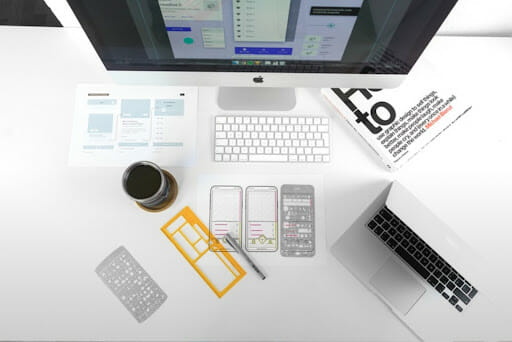The abbreviation for “user experience” is UX (user experience). In a broader sense, this concept refers to the entire user engagement with a web page.
UX design is the creation of functionality depending on user expertise and behaviour research.
The acronym for User Interface is UI. The concept specifies the exterior features of a product, such as design colours, ease of its use, text understandability, as well as other visual components.
Before proceeding, it is necessary to distinguish between User Interface (UI) and User Experience (UX), two subject areas that are frequently confused, most likely due to their close collaboration and the commonality of their abbreviations.
So, one of the tasks is to distinguish between UX and UI. Because user experiences differ, UX design could perhaps assess visitor activities, build behaviour prototypes, and test; that’s what the UX designer does.
UX design is in control of how a product works as well as how customers feel about it. The simpler it is to acquire the optimal outcome and take out the desired action, the simpler the interface.
UI design is the illustration of a prototype created based on the assessment of the target audience. This is work on the graphical representation ui design services of the interface: photographs, settings, keys, typefaces, and so on.
Personal Traits of a UX/UI Designer
- Strong analytical abilities, logical reasoning, and effective communication skills.
- It is critical to successfully plan and handle your process flow while maintaining critical deadlines and goals in mind.
- Pay close attention to the particulars.
- Imagination.
- Competitive skill.
- Maintaining positive relationships with the members of the league is essential, as is conducting research, all of it linked to functionality and acquiring software knowledge daily.

What UI/ UX Designers Must Understand and Possess
- Doodle (interface design).
- Figma is a software development tool (interface design with the ability to work together).
- Photoshop and Illustrator by Adobe (additional functionality).
- Adobe Illustrator XD (prototyping, interface design).
- The Invision app (for creating prototypes with the ability to collaborate) is functional.
- Balsamiq (creation of layouts).
- RedPenny (collective task book).
- Thought (task manager) a framer (design of interactive mobile interfaces).
A UX/UI Designer’s Area of Expertise
A UI designer’s primary responsibility is to help the customer understand what to do to communicate also with good or service. You must be familiar with coding, and the mental components of colour, graphic arts, and a sense of style, in order to do so.
UX Researchers are responsible for evaluating clients and assisting people in understanding them across discussions, polls, and research by asking where they are from, evaluating their habits, and concentrating on their necessities.
The UX Writer is in command of comprehending and defining information exchange, including the consumer, as well as studying one’s speech to determine why the item could perhaps communicate, including the client.
The goal of service design is to create or improve current facilities to ensure they are quite workable, effective, attractive, and useful. People who are truly dedicated to this task offer the finest possible service in the face of the consumer and the firm.
Summarize How to Enter This Field and Become a Good Specialist
Even a thousand-mile journey begins with the first step. The road to becoming a UX designer is not easy. But it’s well worth it. If something doesn’t work the first time, don’t give up. Remember that each new height attained and obstacle overcome will bring you great pleasure and a new experience!

Keep an open mind and be willing to learn new things and change. When you gain experience, don’t rush to choose “proven options,” and don’t run headlong down the beaten path; instead, look for new and innovative approaches to problem-solving.


